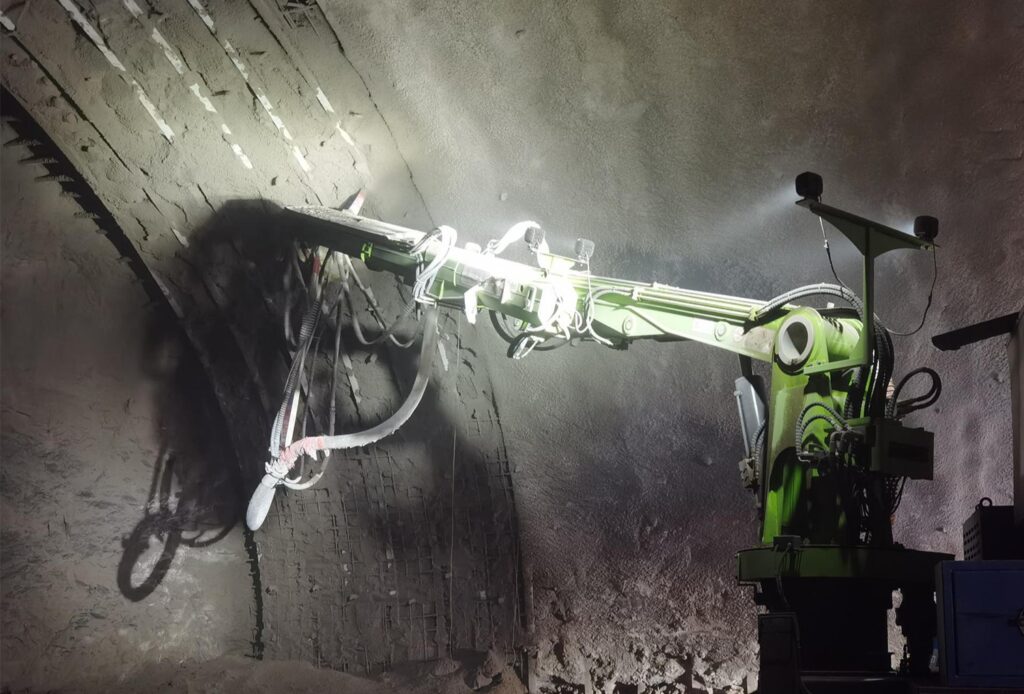In tunnel engineering, concrete pouring is a crucial construction link, which is not only related to the structural safety of the tunnel, but also directly affects the durability and use effect of the project. This article will introduce the specific steps of tunnel concrete pouring in detail, from initial support to secondary lining, and comprehensively analyze the tunnel concrete construction process.

1. Initial support: the use of concrete wet spraying manipulator
After tunnel excavation and arch installation, the first task is to carry out initial support. In this stage, a concrete wet spraying manipulator is used to spray concrete on the tunnel wall. Wet spraying technology can effectively improve the density and adhesion of sprayed concrete, ensuring the stability and safety of the initial support structure. Through this process, the initial support system of the tunnel can be quickly formed, laying the foundation for subsequent construction.
2. Fixing of steel mesh and anchor rods
After completing the initial support, the next step is to set up the steel mesh. The laying of the steel mesh needs to fit closely to the tunnel surface, and it is fixed by anchor rods to form a stable steel skeleton. This process is crucial to enhancing the integrity of the concrete structure. The use of anchor rods not only improves the stability of the steel mesh, but also enhances the bond between concrete and rock soil, ensuring the quality of the secondary lining.
3. Secondary lining (secondary lining)
· Secondary lining is an important step in tunnel lining, aiming to provide a stronger and more durable lining. This process is usually carried out using a secondary lining trolley, which is divided into two main parts: a steel bar erection and welding trolley and a concrete pouring trolley.
· Before pouring concrete, the steel bar erection and welding trolley is needed to accurately fix the steel mesh in the designed position. This step requires precise measurement and positioning to ensure the strength and stability of the structure.
· The pouring trolley is used for pouring concrete. Before pouring, a formwork needs to be set up, and a 50mm×50mm pouring port will be left on the formwork for concrete injection. The concrete should be poured evenly to avoid voids or uneven hardening.
4. Curing
After pouring, the concrete needs a certain period of curing to ensure its strength and durability. During the curing period, the concrete surface should be kept moist to prevent the water from evaporating too quickly and affecting the hardening process of the concrete.
5. Inspection and acceptance
Finally, the quality of the poured concrete is inspected, including strength testing and appearance inspection, to ensure that it meets the design requirements and safety standards. Only after passing the acceptance can the tunnel project continue to the next step of construction.
The entire process needs to strictly abide by the construction specifications and safety standards to ensure the quality and safety of the tunnel project.




